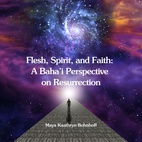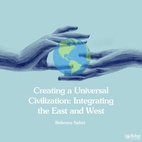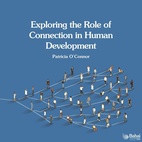The views expressed in our content reflect individual perspectives and do not represent the authoritative views of the Baha'i Faith.
One of the central religious differences dividing Jews and Muslims against Christians involves how Christians have come to understand God in terms of the Trinity.
For Muslims, the idea that the deity could procreate as humans do is explicitly denounced. “God does not beget nor is begotten” says the reverberating refrain of the Qur’an.
Similarly, the identification of Jesus with the Godhead was no small part of why the Jewish clerical establishment rejected Christ’s claim to be the Messiah. Even the followers of Jesus, for their part, didn’t converge on a unified understanding of Jesus’s station relative to God for centuries, with Arianism and other so-called heresies persisting well past the fall of the western Roman Empire.
RELATED: How the Hebrew Prophets Predicted the Coming of Baha’u’llah
Baha’u’llah, the prophet and founder of the Baha’i Faith, provided a remarkable theological resolution that manages to reconcile the Gospel’s description of Christ with the concept of an absolutely transcendent deity.
In his Book of Certitude, Baha’u’llah described the prophets of God as similar to mirrors which reflect the image and glory of God in the finite vessel of a human body. In other writings, Baha’u’llah elaborated on the utter transcendence of “God in his essence.” In this context he invoked a type of negative theology, which rejects all attempts at conceptualizing or describing the deity.
Baha’u’llah’s writings divide existence into three primary levels: 1. the level of God in its essence; 2. the level of the so-called primal will, that first emanation of the essence of God which becomes manifest in God’s prophets and holy messengers; and 3. the level of the human reality. Connecting all three levels is the Holy Spirit. This view is embodied in the Baha’i ring stone symbol.
Abdu’l-Baha, in Some Answered Questions, explained:
Now, if we were to say that we have beheld the Sun in two mirrors – one Christ and the other the Holy Spirit – or, in other words, that we have seen three Suns – one in heaven and two upon the earth – we would be speaking the truth. And if we were to say that there is only one Sun, that it is absolute singleness, and that it has no peer or partner, we would again be speaking the truth.
The purport of our words is that the reality of Christ was a clear mirror wherein the Sun of Truth – that is, the divine Essence – appeared and shone forth with the infinite perfections and attributes. It is not that the Sun, which is the Essence of the Divinity, was ever divided or multiplied – for it remains one – but it became manifest in the mirror. …
It is thus evident and established that the Essence of the Divinity is absolute oneness and has no peer, equal, or likeness.
The Baha’i approach to understanding the Trinity follows a very ancient one, laid out in the philosophy of Neoplatonism. The birth of Neoplatonism around the second century A.D., provided a clear pathway to reconcile the understanding of Christ’s station across the Abrahamic religious traditions. One might argue that some of the core understandings of Neoplatonism have been inspired and partly derived from early Jewish and Christian theology. Neoplatonism itself would be picked up by Islamic philosophers and come to play a central role in several aspects of their developing cosmology – for example, the concept of the “Perfect Man” found in the enormously influential poet, theologian, and philosopher Ibn Arabi’s writings, and later in both Shi’ite and especially Isma‘ili branches of Islam.
This new view of how the Absolute can possibly relate to the contingent grew out of attempts to understand Plato’s famous dialogue Timaeus. In this dialogue Plato described creation as the generation of a so-called “world-soul,” and the agent of this creation as a “Demiurge.” The Demiurge appears as an intermediary between the ‘Good’ or the ‘One’ and creation, a type of divine craftsman who fashions the world.
Later philosophers would eventually identify this Demiurge with the concept of logos, the Greek term for “word.” This usage of the term had the concept of mind or thought wrapped up in it. By the time of the philosopher Plotinus in the 2nd century, one of the core understandings of Neoplatonism was that the “One” was so transcendent that even the attributes of a deity or God could not describe it, and that every human conception would limit it and thus fall short of being able to reference it. However, the “One” would emanate a first mind or logos which was referenceable, and through which the universe was brought into being. This logos would thus enjoy the title of “God,” though it was understood that past it there stood the “One,” beyond human comprehension or direct reference.
Philo Judea, a relatively minor Jewish theologian and philosopher from Alexandria who lived during the same time as Jesus, took the concept of logos which had been developing during the middle Platonic period and applied it to Jewish theology. He identified it with his concept that the “son” or firstborn of God was the vehicle for the creation of the world. Thus, even prior to the development of Christian theology, the concept of logos was identified with the idea of a son of God as an agent for creation.
Later the author of the Gospel of John would apply this Platonic term logos to Christ in its opening passages in a manner identical to Philo’s description about 40 years earlier. The apostle Paul, for his part, would in his letters refer to Christ as the “Image” of God, thereby invoking another idea, akin to Baha’u’llah’s later use of the mirror analogy. Thus, logos was seen as an image or emanation of the Absolute, though not identical with it.
About a century or so later, this concept would form one of the key philosophical positions of Plotinus, who argued that there existed an utterly transcendent “One” from whom logos or the first mind emanated, and which itself created successive levels of reality and gave rise to our universe.
These approaches to bridge the concept of the absolute with the finite mortal realm through the use of logos represented a very useful solution to the paradox which Christ’s statements as recorded in the New Testament presented. Christ appeared to both be claiming a divinity reserved for God at some points, and at other times rejected it and claimed the station of a mere human, with statements such as “I and the father are one,” or “I can do nothing except when I see the father do it” or “why do you worship Me?” and importantly his title as the “Son of God.”
Viewing Christ as assuming the role of the Neoplatonic logos resolves these apparent contradictions. The early Christian theologians adopted a similar approach, thus preserving the unity and utter transcendence of the One or God in its essence.
RELATED: Thieves in the Night: Comprehending the Trinity
However, the Trinitarian theology, which is now ascendant, developed much later. It seems to have initially grown out of the Neoplatonic logos approaches articulated by early church fathers such as Origen, Justine the Martyr, and Clement of Alexandria. The first record of the church fathers using the term “Trinity” occurred in the writings of Theophilus of Antioch during the late 2nd century.
In expounding on the first three days of creation, Theophilus defined the Trinity as God, His Word (logos), and His Wisdom (sophia). This followed the early Christian practice of identifying the Holy Spirit as the Wisdom of God. By the early 3rd Century, the church father Tertullian composed an apological work for the concept of the Trinity, though he noted that the majority of the believers in his day found issue with this doctrine. He explicitly defined the Trinity as Father, Son, and Holy Spirit, defending this version of Christology against the theologian Praxeas who he claimed was a Monarchian, an early Christian theological view which argued for the utter unity of the deity.
By the 4th century, argumentation over the station and nature of Christ still raged, with many adopting a more materialistic and literalistic view that created a singular deity composed in a trinity of a father, a son, and the holy Ghost all made of the same substance or homoousios. Invoking the concept of “substance,” the deity was implicitly materialized. The fact that a singular Absolute God can be composed was referred to variously as a “mystery,” and became the source of long-lasting debates over the abstruse details of exactly how the Trinity was composed yet singular.
This new view of Christology embodied in homoousios additionally altered the long-standing subordinationist view of Christ relative to God the Father, which dominated early Christian thought and was explicit in the New Testament.
Now reflecting on Baha’u’llah’s and later Abdu’l-Baha’s discussion of the Trinity, this view really represents returning to what probably amounts to the original early Christian understanding of the station of Christ relative to God in its essence – a view embodied in some of the core beliefs of Neoplatonism and the earliest church fathers. A return to this view has been advocated in various forms for several centuries by the Christian Unitarian churches, which also tend to be the most inclusive in their approach to other non-Christian faiths.
The Baha’i teachings stand for the oneness of the Creator, and affirm, as Baha’u’llah wrote, that “God in His Essence and in His own Self hath ever been unseen, inaccessible, and unknowable.”

















Comments
Sign in or create an account
Continue with Googleor